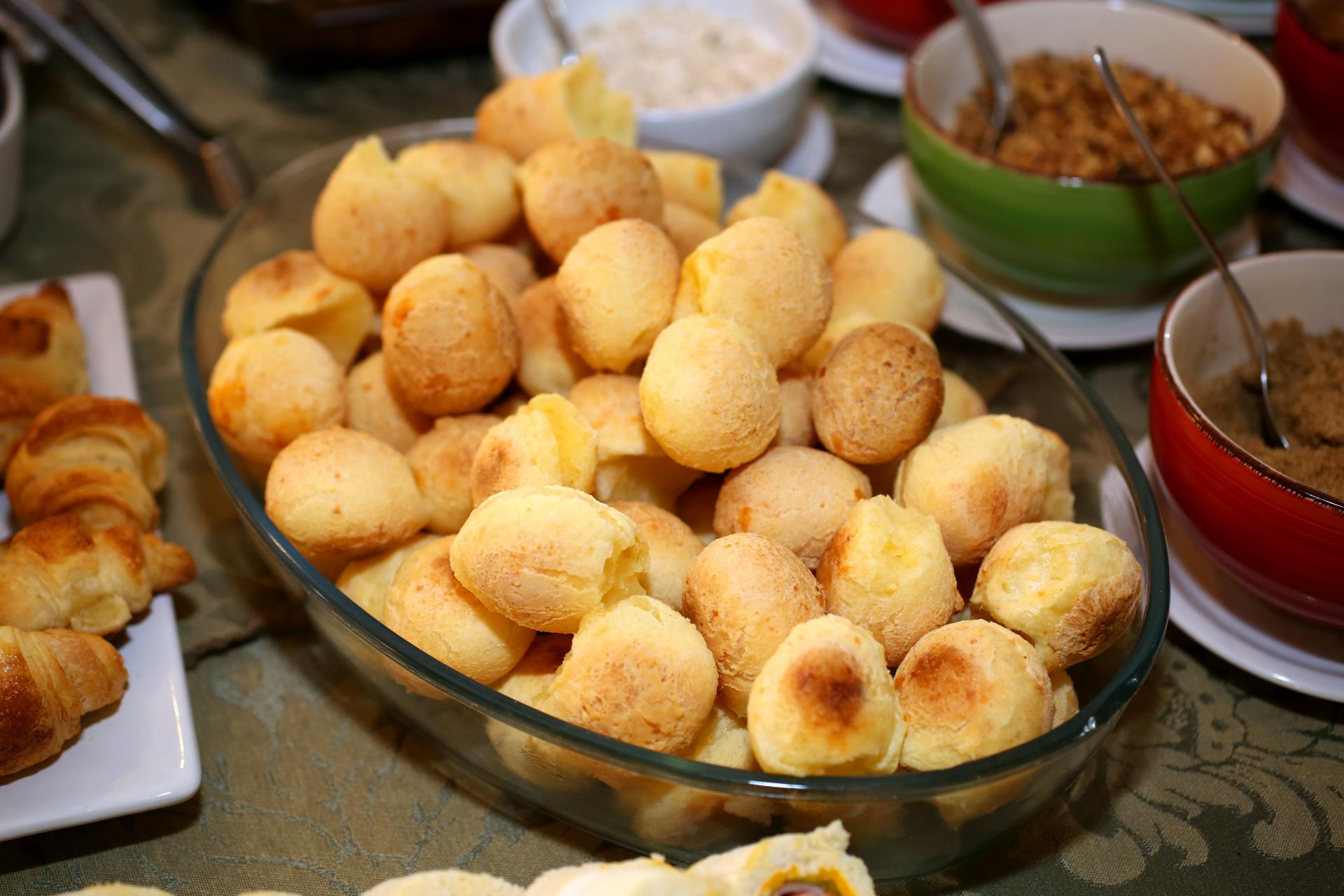Pão de Queijo – A Popular Brazilian Snack

Anyone who has ever been to Brazil will certainly remember these small popular cheese balls. The perfect snack for in between is not only very popular among Brazilians, but also among tourists. It’s believed, that the popular Pão de Queijo was invented in Minas Gerais, but this cannot be clearly proven.
Pão = bread
de = off
Queijo = cheese
These small, round and golden cheese balls are crusty on the outside and soft on the inside. After returning from a holiday in Brazil, it’s very difficult to go on without them. Here you will get the most important facts about Brazilian Pão de Queijo and a super light recipe to copy, so you can still enjoy some Brazilian flair at home.
Do you know the story of Pão de Queijo?
Although this delicacy is a very popular snack in most parts of Brazil, there is little clear information about its origin. Legend has it, that the recipe originated in Minas Gerais in the 18th century. In the mansions of the landowners, cooks used manioc flour, now known as polvilho, in their bread recipes instead of the wheat flour brought by the Portuguese. The cooks mixed milk and eggs together with the polvilho and cheese crumbs. It was then quite by chance, that the cheese balls, that are so popular today, were created.
Another legend says, that the recipe was originated in times of slavery. Like many of the delicious dishes of the western hemisphere, Pão de Queijo has its roots in the culinary creations of African slaves. However, slaves were often deprived of the "edible" part of animals and vegetables. They received the "unusable" remains from the landowners. With animals, this was for example the tail, the head, the stomach and similar. Think of the Brazilian national dish Feijoada, which has similar origins.
Manioc, a root also known as yuka and cassava, was a widespread staple food during the Portuguese colonization of Brazil. This root was peeled, grated, soaked and dried to produce some foods, that are now considered traditional Brazilian. When manioc was processed, fine white powder was left over, which was considered inedible by the landowners. The slaves collected this powder and made dough balls from it, which were later baked. Initially, it was only baked starch, only later milk, cheese and eggs were added.
The recipe
If you search the Internet for recipes for Pão de Queijo, you will find countless recipes. Some take water, others milk. Some use lard, while others prefer butter or oil.
There are also differences in the polvilho, there are the two varieties sweet and sour. With sweet polvilho the cheese balls become more even and crispy. In the variant with the acid polvilho, the dough expands more and the cheese balls become looser. Some also take a mixture of both polvilhos.
And the cheese? It should be hard, salty and tasty. For example, the Serra da Canastra cheese, Gruyère or Parmesan, which traditionally comes from Minas.
Fact is, that there are probably countless possibilities and variations for the popular Pão de Qeijo. Here you can find our favorite recipe:
- 500 g of tapioca flour/ tapioca starch
- 100 ml of oil
- 250 g of grated cheese (a mixture of Parmesan and Gouda cheese, medium-aged)
- 2 small eggs
- 200 ml of milk
- 60 ml of water
- 1 tsp salt
Put milk, water, oil and salt in a pot and bring it to boil. Remove the pot from the heat and gradually add the tapioca flour while stirring. Now add the eggs and cheese and knead the dough well with your hands. If it is too sticky, knead in some more tapioca flour.
Grease your hands with a little oil to make it easier to shape the balls and then place them with a bit of distance on a baking tray lined with baking paper. Preheat the oven and bake the cheese balls on the middle shelf for about 20 minutes at 80 °F (180 °C) in a convection oven until they’re golden brown.
Tips:
- To form better balls, let the dough rest in the refrigerator for about 1 hour.
- Pão de Queijo tastes best when it’s fresh from the oven and still warm.
The gluten-free tapioca flour is obtained from the tapioca root. It has a similar consistency to cornstarch but is essential in the production of Pão de Queijo. It’s best to avoid experiments with other types of flour.
It’s also interesting to note, that Pão de Queijo did not really become known until around 1950. From this decade on, this delicacy was not only very popular throughout Brazil, but also in other parts of the world, such as the USA, Europe and Japan. In other countries like Paraguay, Colombia or Argentina you can find similar recipes. However, to taste the original Pão de Queijo, you should make a trip to Brazil.
Sources: www.massamadreblog.com.br, www.tudogostoso.com.br

